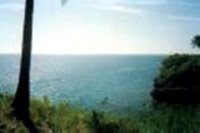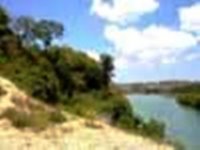 Retirement Village
Retirement VillageA Cebuano now based in Singapore has developed a retirement village located in Tabogon, a municipality situated in the northern part of Cebu province.
A.C. Enclave Resort Homes is a small village composed of 15 individually designed bungalows on lot areas ranging from 214 to 602 square meters.
The development will address the requirements balikbayans (returning overseas Filipinos) are looking for in a property where they will consider living for the rest of their lives.
Tabogon is ideally situated 1 1/2 hours drive from the heart of the busy city of Cebu, along the coast going north.
The amenities of the retirement village are of a first class resort. The convenience of a private beach is articulated by the children’s playground, clubhouse, swimming pool, wellness center and piazza as an activity center for personal needs.
Other architectural features vary in each home, from individual water feature or hot tubs, high ceilings, loft style rooms, glass walls, and corner windows that capture a maximum panoramic sea view giving a great atmosphere of well being.
The developer who is a practicing jewelry designer commissioned seven accomplished architects all with track records in design to build fifteen boutique bungalows by the coast of Tabogon Bay.
The design concept offers a gated community in clusters of two or three homes in a setting of a botanical theme part. House areas range from 95 to 210 sqm of 2 bedrooms, 2 baths to 4 bedrooms, 4 baths.Special attention to technical details are expressed in the individual water treatment facilities, centralized water system, garbage chutes, standby power facility, telecommunication hook-ups and 24 hour security.
Jogging pathways, tree part buffer zone, mini forests and landscape promenade serve as a backdrop to these poetic modern designs built on the hill facing the Camotes Sea, thus giving a perfect blend of modern luxury and a healthy way of life.
The enclave is a botanical theme park in Tabogon with its seven coves facing the Camotes Sea and the island of Leyte, an hour and a half drive 80 kilometers from Cebu city on a less-traveled but cemented coastal road within hollering distance to 18-hole golf courses, the Club Filipino in Danao and the Mercedes Plantation Golf and Country Club in Medellin and just 15 minutes to the five-star Alegre beach resort in Sogod.
Seven architects were engaged to individually design resort houses for the Enclave. Ed Daang creates “a contemporary retreat that would optimize spectacular views of the natural landscape, water and sky and enhance the opportunity for lifestyle of indoor and outdoor living.” Arnulfo Crusit Wong University of San Carlos faculty of architecture for 12 years envisions three houses in his cluster “after all, three is not a crowd rather it is company,” naming them “Last Train,” “Hound Dog” and “Teddy Bear” cute and playful split- level with wading pools, upper decks with bar and sundial, balconies end bridges.
Chito Alcordo with impressive credentials (CIT Harvard for BS and Master’s degrees, national president of the United Architects of the Philippines and past chairman of Architects Council, Asia) came up with three houses in his cluster with an ocean view form the roof deck, a cylinder-shaped house, terraces, a high ceiling, a clerestory and skylight for ventilation and light.
Arsenio Abella with major projects in Ayala Alabang, AAP awardee in sculpture, outstanding alumnus, member of the college of fellows in architecture who believes “architecture is a sculpture of voids, a masterful use of his medium expressed in the intention of what the building wants” translates his houses in sculptural and geometrical designs.
Michael Angelo Colmenares has “solitude” in mind designing wall to wall glass solarium and “Nautilus” in the chambered clam-shaped house. Alex Medalla of the designing family, building high rise residential and commercial houses in Brunei, Hong Kong and “committed to serve the local building industry in Cebu” built houses for his cluster as “different entities, physically and formally embedded into the topographically rich landscape…” the structures “bled out from the earth where they are snuggled.”
A.C Signature Developments, Inc., is a privately-owned entity that serves as a holding company for various interests in the Philippines. As its first venture into property development it has embarked on a first of its kind concept in property development.
HistoryAccording to handed-down legend of the Municipality, the Municipality was once known as "Agoho" because it was somewhere around a tree of this species, where the first know settlement in the area was established. The tree was very huge and its foliage very thick. The tree became a landmark and eventually the place came to be known by it.

Then came wave after wave of Moro marauders in their fast vintas and with razor-sharp kris. Their shouts, as they attacked, brought paralyzing fear into the hearts of the people. Their only alternative was to free to nearby hills whenever the Moros came.
In the 16th century, the Spaniards came. They helped in the resettlement of the people, who called their hiding place "Tabogon" as a reminder of their many experience in the hands of the Moro pirates. Thus the name "Agoho" passed into oblivion, replaced by the new name, which up to the present the Municipality is called.
Upon being converted to Catholicism, the people built a big church, a rectory and a bellfry. These were built of bricks and stones and in the area where a portion of the land extends towards the Visayan Sea. These buildings, being large and massive, also served as shelters where the people can hide, in the case the Moro pirates came back.
Tabogon became a town and the people elected Pablo Hortelano as its first Capitan Municipal. During his term he proposed and enacted the transfer of the townsite to another place, then called Tagasa, 3 kilometers north of its former location. The name Tabogon was retained.
Basic FactsTabogon is a municipality of the province of Cebu. According to the 2000 census, it has a population of 27,827 people in 5,825 households. Tabogon is politically subdivided into 25 municipalities.
Topography: Generally hilly and mountainous
Climate: It is characterized as a distinct wet and dry season.
Soil Type:Clay loam Sandy loam Gravelly loam
Suppliers/Producers
1. Coconut
2. Vegetables
3. Corn
4. Fruit Trees
5. Root Crops
Raw materials available within the area:
1. Rock Phosphate
2. Bamboo
3. Buri
Existing Skills Available
1. Carpentry
2. Mat/Basket Weaving
3. Masonry
(LGU)






